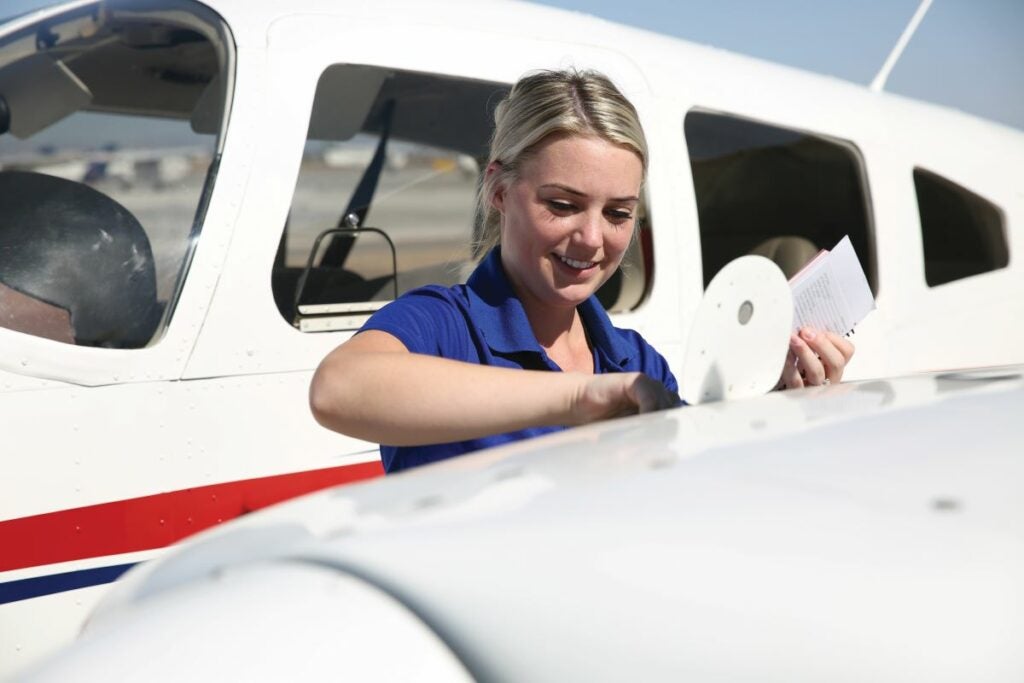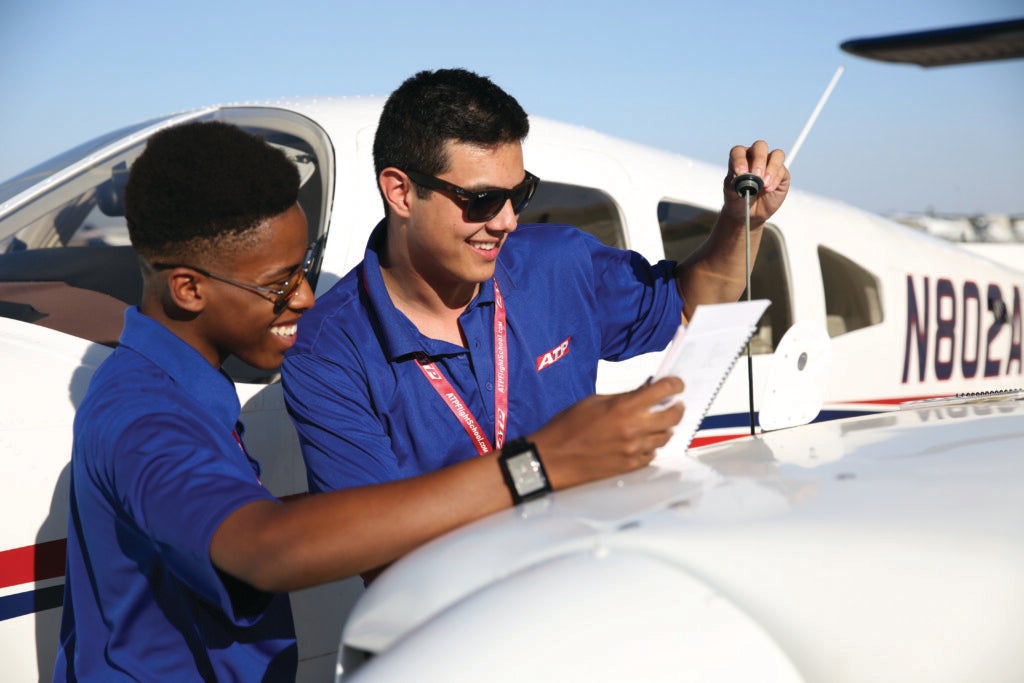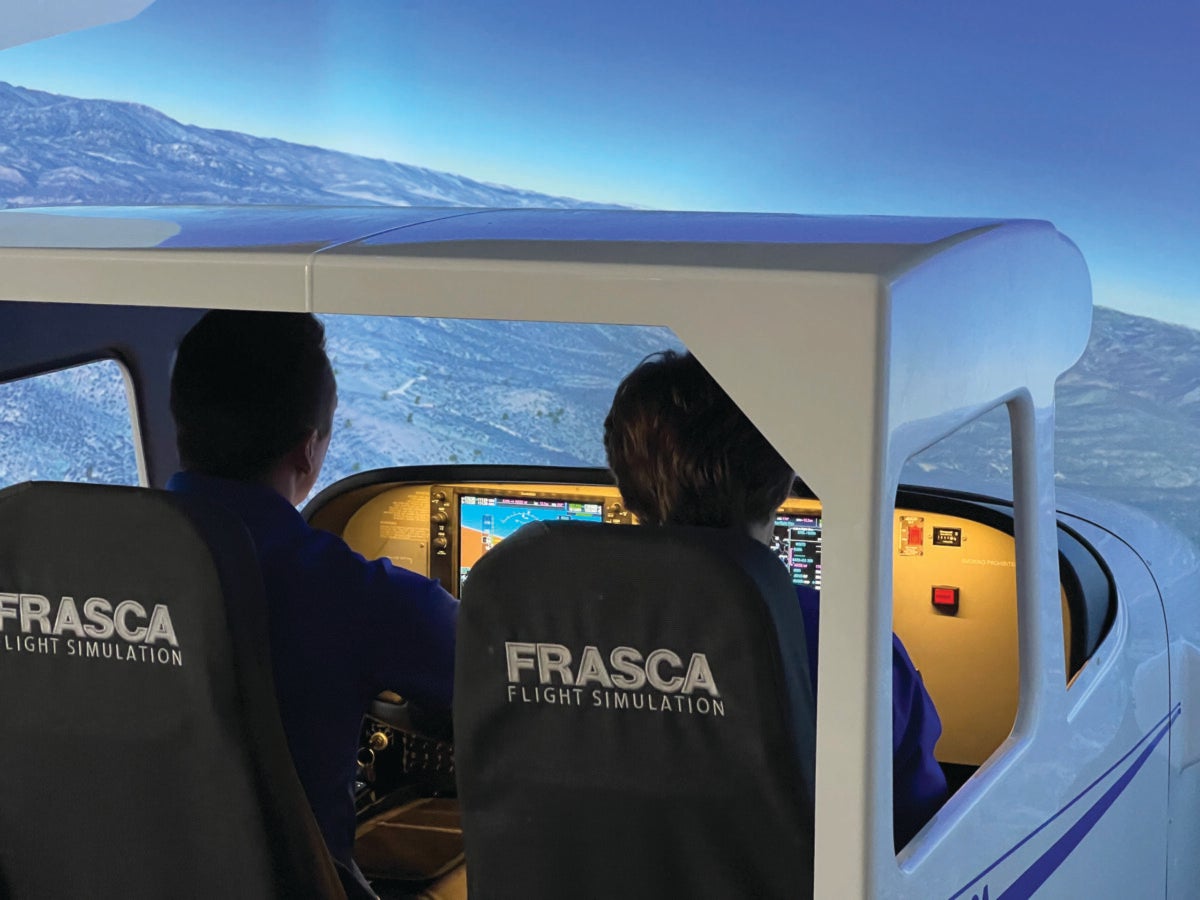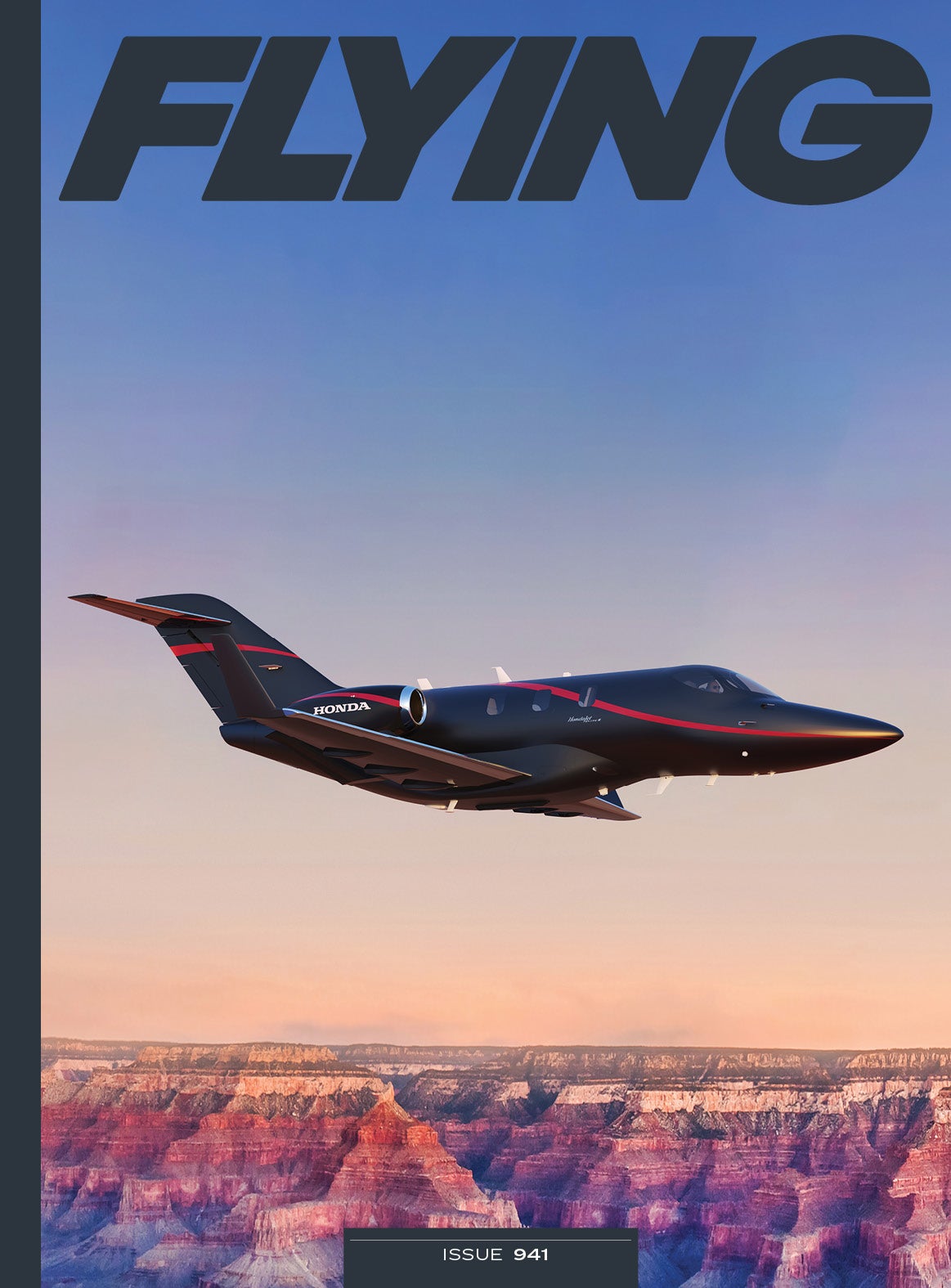Considering a career as a professional pilot? Would you like to get there sooner rather than later? If the answer is yes, an accelerated training program may be right for you. FLYING Magazine reached out to several providers to see how they go about training the next generation of aviators in the most expedient manner.
These programs are offered all over the country. Someare designed to take someone from zero to 1,500 hours in approximately two years or less. Others offer finish-up or time-building opportunities. Accelerated programs often have a pipeline to air carriers that provide tuition assistance to cover the cost of training with the under-standing the applicant will come work at that airline.
If you’re not already a subscriber, what are you waiting for? Subscribe today to get the issue as soon as it is released in either Print or Digital formats.
These schools are not inexpensive—expect to pay roughly $70,000 or more, depending on the program youselect. Understand the contracts, know your responsibil-ities, manage expectations, and recognize that there maybe a life disruption if you relocate for training.
And one caveat: double-check the fine print before you sign up, especially when it comes to financing, program costs, and refund policy. Note the asterisk that indicates a caveat, such as “check ride fee not included.” Remember that the prices posted on the website for the schools are based on average numbers. Your mileage may vary.
American Flyers
American Flyers has been training pilots since 1939. The courses range from private pilot to multiengine ratings,with a smattering of finish-up programs tailored to the individual.
They have six training facilities, including one each in New Jersey, Florida, and Arizona, and three in Texas. The fleet consists of 50 aircraft ranging from Cessna 172s to Piper Seminoles, and they utilize Frasca advanced aviation training devices, with about 150 instructors on staff.

According to Andrew Henley, vice president of AF, the applicants are told to think of themselves as professional pilots from day one. For the students who arrive with flight time, a senior check pilot audits their logbooks and evaluates their skills to determine what needs to be done to finish their training. There are often learners with hours of experience but whose basic skills are lacking. “They have difficulty with basic climbs, turns, and descents,”says Henley. “Their previous time has been a repeat of the same hour,” he says. The solo is not completed until the 25-hour mark, which follows a stage check.
Those who are struggling are identified and get extra attention, says Henley, as pushing someone through the program with weak skills does not benefit anyone, least of all the learner—or the airlines. “We want them to have the experience they need, the 1,500 hours, but it needs to be the right kind of experience,” he explains, adding that the American Flyers Instructor academy focuses on hiring CFIs who “are dedicated to the craft and not there to build hours. They are there to build experience so they can train the next generation of aviators.”
Thrust Flight
Thrust Flight offers a Zero Time to Airline program. The application process comprises interviews and personality and aptitude tests very similar to those airlines use. “This process helps ensure students who have the highest chance of success are admitted into the program,” says Brian Brassaw, chief marketing officer from Thrust Flight, adding that each class has a specific start date, which creates an immediate support system among the students.
“We’ve found with the group-based approach, students clearly help one another progress more quickly in the program compared to doing everything on their own,” says Brassaw. In addition, prior to arriving on-site, the learners are directed to a library of flight training videos on the school’s YouTube channel. The training fleet is made up of Pipers, Cessnas and Redbird AATDs.
The cost of the program is approximately $99,000 for those who start from scratch. “The amount of flying they do will vary as they go through the program, but for the most part, they’ll have up to eight flights per week,” says Brassaw. “Then they’ll have ground and scheduled group study sessions to attend. We expect our students to spend several hours per day studying. Once they are actively flying, the learners need to read ahead in the syllabus and associated book to prepare for the next day’s lesson.
“Above all, remember to look out the window and enjoy yourself,” he says, “flying airplanes is supposed to be fun.”
ATP Flight School
ATP Flight School, established in 1984, is the largest accelerated training operation in the United States, with 77 locations. Preparation is key, says Michael Arnold, ATP’s director of marketing. Before learners begin the program, they receive a training bundle that contains FAA handbooks and ATP Training Supplements, and students are provided access to ATP’s online resources and library. The applicants will have access to ATP Elevate, which is described as an online ground school. The applicants must complete a guided study course before they report for training so they are prepared to begin flying.

“The ATP fleet consists of 501 aircraft, of which 360 are glass cockpit, and 91 of the aircraft were delivered over the last two years,” says Arnold. Piper Archers and Cessna Skyhawks are their primary options for single-engine training. Although flying different aircraft can be beneficial in the long run, it can be confusing during primary training, as it can result in negative transference, or doing a procedure that is correct for one model of airplane out of habit in another model of airplane for which the procedure is incorrect. Therefore, learners do not switch back and forth at ATP.
The Piper Seminole is used for multiengine operations, and ATP also utilizes Frasca AATDs, which, Arnold notes, is how the airlines train their pilots on procedures. “The industry-leading fidelity and realism of these devices make it possible to introduce students to foundational skills in a safe and controlled environment,” he said. “This airline-oriented approach allows students to gain proficiency in fundamental skills on the ground and make for a more impactful transfer of learning from the simulator to the airplane, increasing the effectiveness of training.”
Paragon Flight
Paragon Flight Training in Fort Myers, Florida, has been teaching pilots since 2006. Their business model is slightly different from the others as they offer accelerated training for pilots who run the gamut from recreational to professional, and pilots who seek to gain more proficiency in technologically advanced aircraft—their entire fleet of Cirrus, Cessna, and Piper trainers have been all-glass since they opened their doors.
The trick to success in an accelerated program is treating learning to fly like a full-time job, says Chris Schoensee, the president of Paragon Flight. The learners need to have their medical certificate before they show up, have begun the computer-based training (groundschool), and be ready to focus on flying. “They should have their affairs in order so that they can dedicate 30 to 40 hours a week to training. This includes traditional classroom sessions, simulator sessions, and flights in the aircraft,” he says, adding that their program is designed around the applicants, many of whom don’t necessarily want an airline job.
“Our program is designed to prepare aspiring pilots to be ready for any career path, including corporate,” Schoensee continues. “Unlike institutions that purely focus on developing commercial pilots, Paragon has always catered to many different types of clients by creating custom programs… so by default, the school is a very diverse place to be part of.”
For the applicant seeking a professional certification, the time from ground pounder to flight instructor instrument is approximately 14 months. Some of the graduates are hired as instructors—but only if they demonstrate they are good teachers, because sometimes there is a difference between being a good pilot and a good instructor.
Accelerated is Not For Everyone
Flying can be challenging, and when you are trying to keep pace in an accelerated program, it is easier to get buried. This is recognized by good flight schools.
Paragon Flight Training
“One aspect that has always set Paragon apart from other schools is our senior level management and ownership’s ability to immediately get involved if a student is struggling or if there is a customer service issue. As soon as a problem arises, we take action and correct it to the best of our ability,” says Schoensee.
ATP Flight School
Local training support specialists actively monitor a student’s progress, coordinate logistics, and anticipate needs. They proactively counsel students and instructors, provide coaching, and intervene as needed on behalf of the training team. Training support specialists, training support managers, primary flight instructors, and evaluating instructors collaboratively mentor and work with each student to overcome challenges, set goals, and define action plans with a clear path toward success, says Arnold.
Thrust Flight
“Every one of our Zero Time to Airline studentsis under a program manager who oversees their program,” says Brassaw, “They regularly meet with the students one-on-one to ensure they’re meeting program deadlines while getting the support they need. If a student is struggling to pass stage checks in the program, we’ll switch the student to another instructor or more senior instructor to give them additional opportunities to progress.”
American Flyers
“We identify the learners who are struggling early so we can get out in front of it,” said Henley. “The first 15 hours of flying is basic attitude flying the climbs, turns, and descents. None of our students solo before 20 hours and a stage check to make sure they have the basics down. We subscribe to the 80/20 rule. 80 percent of the students will graduate within the estimated time with a private pilot certificate with 45 hours of dual and five of solo, and 25 to 30 hours of ground. Approximately 20 percent need a little more than that.”
This article was originally published in the February 2023 Issue 934 of FLYING.

